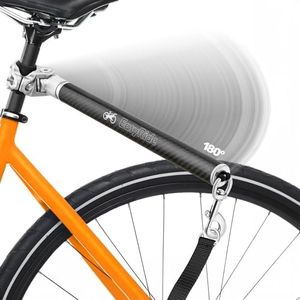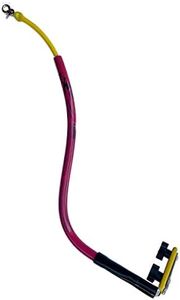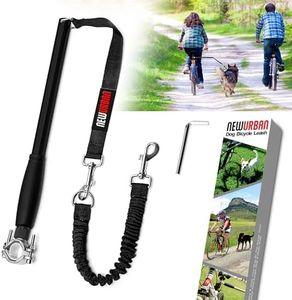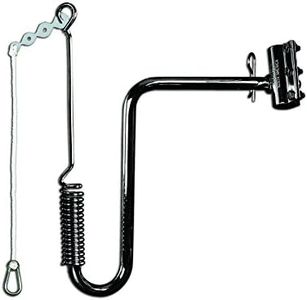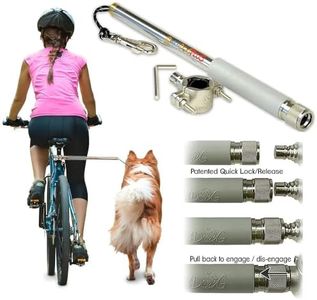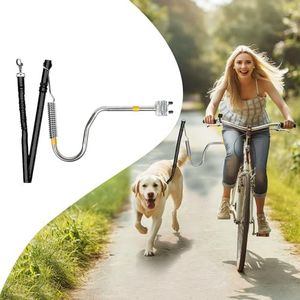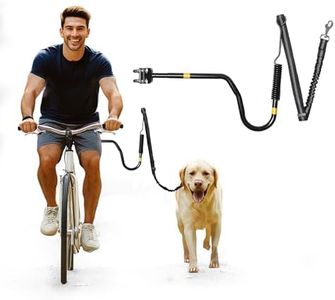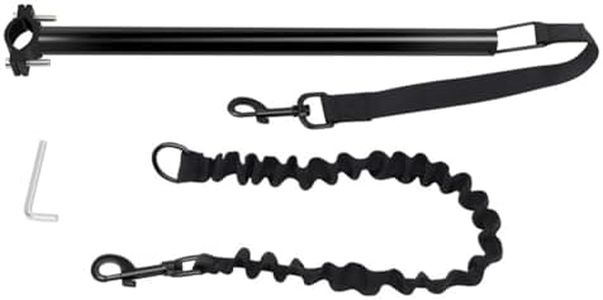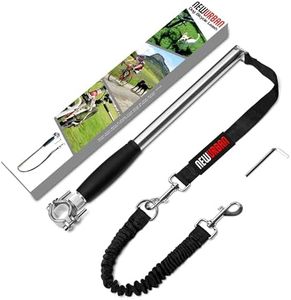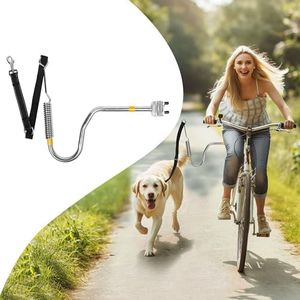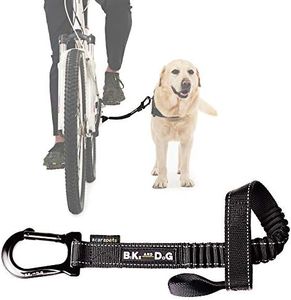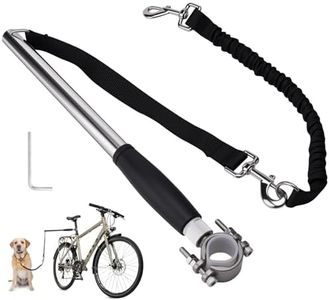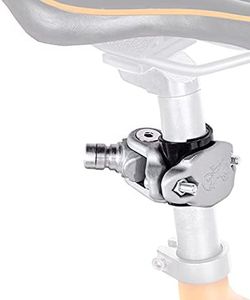We Use CookiesWe use cookies to enhance the security, performance,
functionality and for analytical and promotional activities. By continuing to browse this site you
are agreeing to our privacy policy
10 Best Dog Bicycle Leashes
From leading brands and best sellers available on the web.Buying Guide for the Best Dog Bicycle Leashes
Selecting a dog-bicycle leash is an important decision if you want to exercise with your dog safely while riding your bike. The right leash allows you to keep your pet close and under control, while preventing tangles or accidents. When choosing a leash, think about your dog's size, strength, temperament, and your style of cycling. The right features will promote both your and your dog's comfort and safety.Attachment MechanismThis is how the leash connects your dog to your bike. Attachment mechanisms often come as clamps, brackets, or special mounts that fit onto the bike frame, seatpost, or sometimes elsewhere. This spec matters because a secure attachment keeps your dog consistently at your side and prevents accidents caused by sudden tugs or pulls. Mechanisms may be quick-release for easy installation and removal or fixed for lasting security. For casual riders, a simple clamp may work, while more adventurous cyclists or owners of strong dogs should look for robust, stable attachments to handle sudden pulls.
Leash LengthLeash length determines how far your dog can move away from the bike and plays a big role in your dog's comfort and safety. Shorter leashes (around 12–18 inches) keep your dog close, preventing them from veering into traffic or obstacles; these are best for urban environments or for dogs new to running alongside a bike. Medium-length leashes (18–30 inches) offer a bit more freedom, suitable for dogs familiar with biking. Longer leashes are often unnecessary and can cause tangling or loss of control. Think about your riding environment and your dog's training when choosing leash length. Closer is usually safer, especially on busy paths.
Material and DurabilityThis refers to what the leash is made from—usually nylon, metal, or a combination of both. Durability ensures the leash withstands tugs, chewing, and weather without snapping or wearing out too quickly. Nylon is flexible and comfortable, but metal offers extra strength for strong or large dogs. Choose a sturdy, chew-resistant material if your dog is strong or likes to gnaw on the leash. Softer, lighter material may work for smaller or calmer dogs. For frequent riders or dogs prone to pulling, prioritize reinforced or heavy-duty designs.
Shock AbsorptionSome dog bike leashes feature built-in shock absorbers or bungee sections that stretch to absorb jerkiness when your dog suddenly pulls or changes pace. This is important for reducing stress on both your arm and your dog's neck or harness. Firms leashes without any give provide direct control but can be jarring if your dog is still learning. Leashes with moderate shock absorption are good for energetic dogs or those still in training, while solid attachments suit calm, obedient dogs used to running alongside a bike.
Swivel MechanismA swivel mechanism allows the leash to rotate and prevents it from tangling if your dog moves around or changes sides. This is helpful especially for active, curious dogs or those not yet skilled at staying in a constant position next to the bike. If your dog tends to get tangled or tries to cross over, a leash with a reliable swivel can make rides safer and less frustrating for both of you. For well-trained dogs that stay in place, this feature is less critical.
Ease of Installation and RemovalSome bike leashes can be attached and detached in seconds, while others require tools or a more involved setup. If you frequently switch between riding solo and riding with your dog, or if you share your bike with others, a quick-install option saves time. However, if you always ride with your dog, a more permanent attachment might offer more stability. Consider how often you’ll need to take the leash on and off when making your choice.
Safety FeaturesCertain leashes include extra features such as reflective materials for visibility at night, built-in quick-release functions for emergencies, or safety straps for added security. These features are especially important if you plan to ride in low-light conditions, busy areas, or with energetic dogs. Consider your riding environment and your dog’s behavior to decide which extra safety options are right for you.
